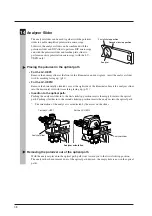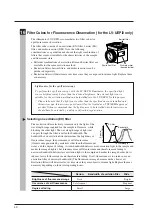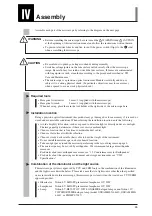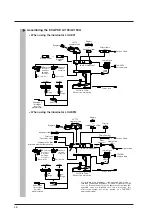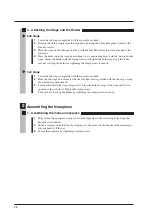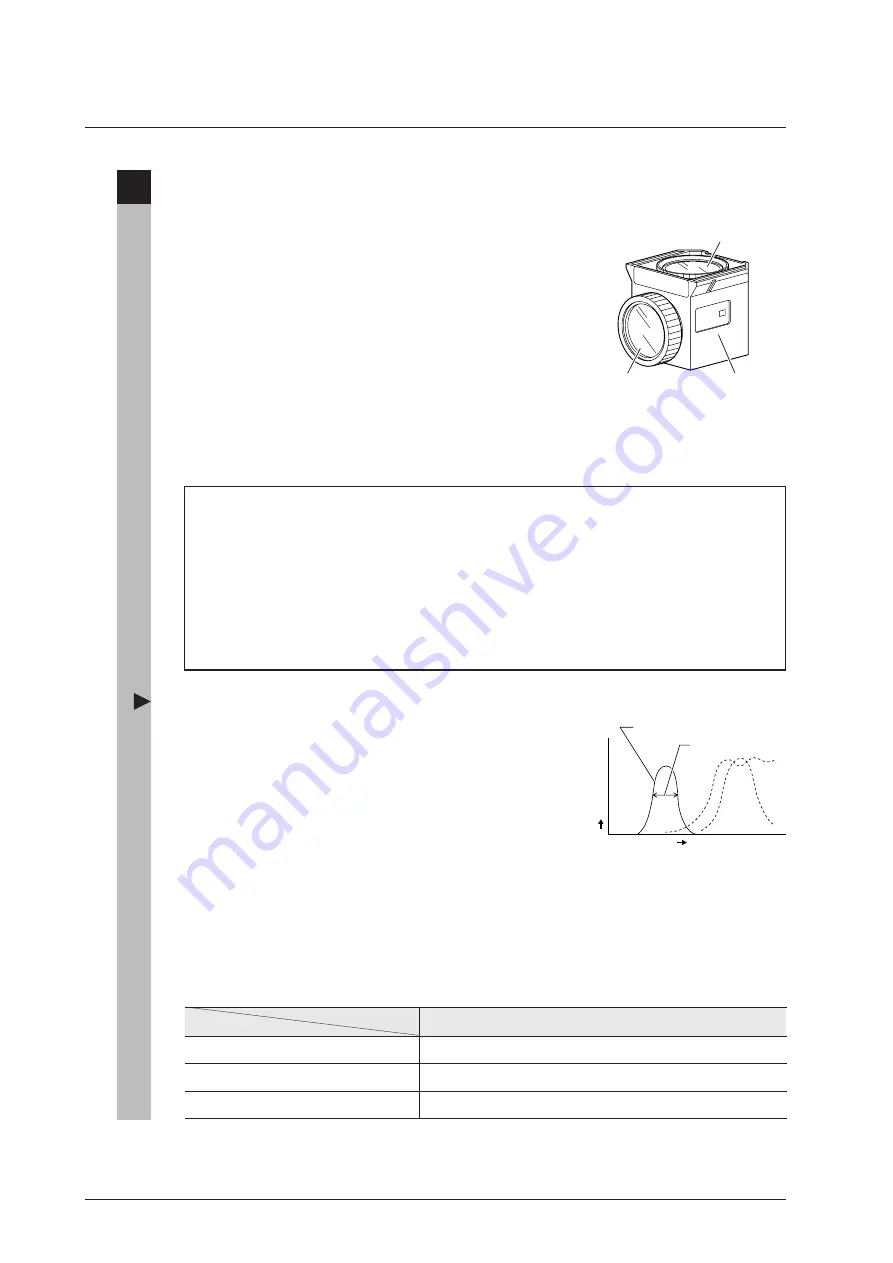
40
16
Filter Cubes for Fluorescence Observation (for the LV-UEPI2 only)
The illuminator LV-UEPI2 accommodates two filter cubes for
epi-fluorescence observation.
The filter cube consists of an excitation (EX) filter, barrier (BA)
filter, and dichroic mirror (DM). Note the following
considerations as a guideline and choose the right combination of
filters that are most suitable for the characteristics of the sample
and fluorescent stain.
•
Different combinations of excitation filter and barrier filter are
available for the same excitation method.
•
Excitation filters, barrier filters, and dichroic mirrors can be
purchased separately.
•
Excitation filters will deteriorate over time since they are exposed to intense light. Replace them
as necessary.
Light source for the epi-fl microscopy
To perform the epi-fl microscopy with the LV-UEPI2 illuminator, the specified light
source brightness may be less than the desired brightness. An external light source
suitable for the excitation method can be installed into the LV-UEPI2 for this purpose.
* Please take note that if a light source other than the specified ones are installed onto
this microscope, this microscope system will not be treated as a TUV/SEMI approved
product. Nikon recommends that the light source to be installed onto this microscope
should have been tested by a safety certification organization.
Selecting an excitation (EX) filter
The excitation filter selectively transmits only the light of the
wavelength range required for the sample to fluoresce, while
blocking the other light. The wavelength range of light that
can pass through the filter is called the bandwidth. The
bandwidth of an excitation filter determines the brightness of
fluorescence image, the occurrence of self-fluorescence
(fluorescence generated by materials other than the fluorescent
stain), and the degree of fading. A wider bandwidth delivers more excitation light to the sample and
makes the image brighter, but it induces more self-fluorescence and therefore more fading A
narrower bandwidth delivers less excitation light to the sample and makes the image darker, but it
induces less self-fluorescence and therefore less fading. If self-fluorescence is too intense, use an
excitation filter of narrower bandwidth. (The fluorescence image becomes darker, however.)
Excitation filters will deteriorate over time since they are subject to intense light. Replace them as
necessary depending on their total operating hours.
UV-2A
EX 330-380
DM 400
BA 420
Barrier filter
Excitation filter
Dichroic mirror
(housed inside)
0
EX filer
Bandwidth
Wavelength
Spectr
al
tr
ansmittance
Brightness of fluorescence image
Occurrence of self-fluorescence
Degree of fading
Narrow
Bandwidth of excitation filter
Wide
Dark
Bright
Less frequent
Frequent
Small
Large













